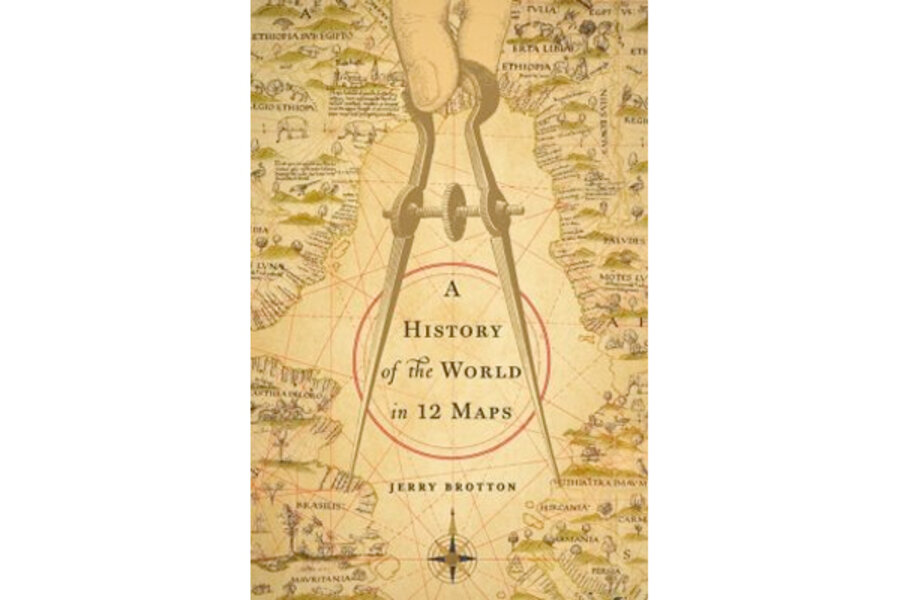A History of the World in 12 Maps
Loading...
The last 10 or so years have seen a cavalcade of books that purport to tell the history of the world (or at least a history of the world) via some specific and often mundane object: beverages, or salt, or even cod. And let's not forget "Banana: The Fate of the Fruit That Changed the World."
So as far as a "history of the world" theme goes, the subject of maps seems fairly plausible. When viewed as artifacts, maps convey a great deal of information, not just through the geographic and human-made features they depict, but through what's left off, how they measure distance and importance, how they were used and by whom, and how they are wrong.
A History of the World in 12 Maps digs (quite deeply) into cartography, but it also touches upon religion and cosmology, the conflict and compromises of faith and science, astronomy, political science, history, education, and more. A map, we soon learn, is not merely a depiction of roads and mountains. It is the expression of human fears about the monsters that live beyond our immediate knowledge as found in the Hereford Mappamundi. It is a profound message of national unity like the Cassini family map of France. It is the glorification of a ruler, like Roger II of Sicily.
Author Jerry Brotton's book dips into maps spanning millenia of human experience, from Ptolemy's Geography (circa 150 AD) all the way up to Google Earth, the dynamic, increasingly omnipresent Internet Age way that we answer the age-old question "Where am I?" As Brotton travels through his dozen maps, he leaps like a Timelord from place to place and era to era; now in 19th-century London, now in medieval Korea, now in Spain during the Age of Discovery.
Along the way, he find some marvelous things. Here's his description of the Hereford Mappamundi as a physical object: "[T]he visitor is first struck by just how alien it appears as an object, never mind as a map. Shaped like the gable end of a house, the map undulates and ripples like some mysterious animal – which, in effect is what it is. Measuring 1.59 metres (5 feet 2 inches) high and 1.34 metres (4 feet 4 inches) wide, the map was made from one enormous animal skin. The shape of the animal is still discernible, from its neck, which forms the map's apex, to its spine, which runs down the middle of the map. At one glance, the map can look like a skull, or a cross-section of a cadaver, with its veins and organs on display; with another look it could be a strange, curled animal."
In the process of bringing 12 highly significant maps to his readers, Brotton also touches upon moments that resonate on multiple levels. The Cassini map of France, for example, hit a major budget crunch when King Louis XV's controller-general declared that its budget had been cut. The answer: a funding scheme remarkably similar to a modern-day Kickstarter.com campaign wherein a community of philosophically united patrons kicked in cash to support the project, receiving perks (like two copies of the finished map upon completion) in return for their backing.
Brotton is a map expert as well as a professor and he brings the classic strengths and weaknesses of an academic to this project. The writing is erudite and supple, steeped in knowledge and perspective. But "A History of the World in 12 Maps" can also feel like a textbook, lacking the flashes of wit and biographical insight that can help non-experts traverse this kind of a vast, sweeping survey without growing weary. That said, Brotton deserves congratulations for the clarity of his writing and the extent of his reach. There isn't a map analyzed within this book's pages that doesn't somehow illuminate a pivotal moment of or insight into history, science, or cartography.
As is true of many wide-ranging, globetrotting examinations of intellectual history, the book eventually winds up being as much about the nature of knowledge (and its shortcomings) as anything else. "The paradox is that we can never know the world without a map," writes Brotton in the book's closing, "nor definitively represent it with one."
James Norton is a Monitor contributor.








